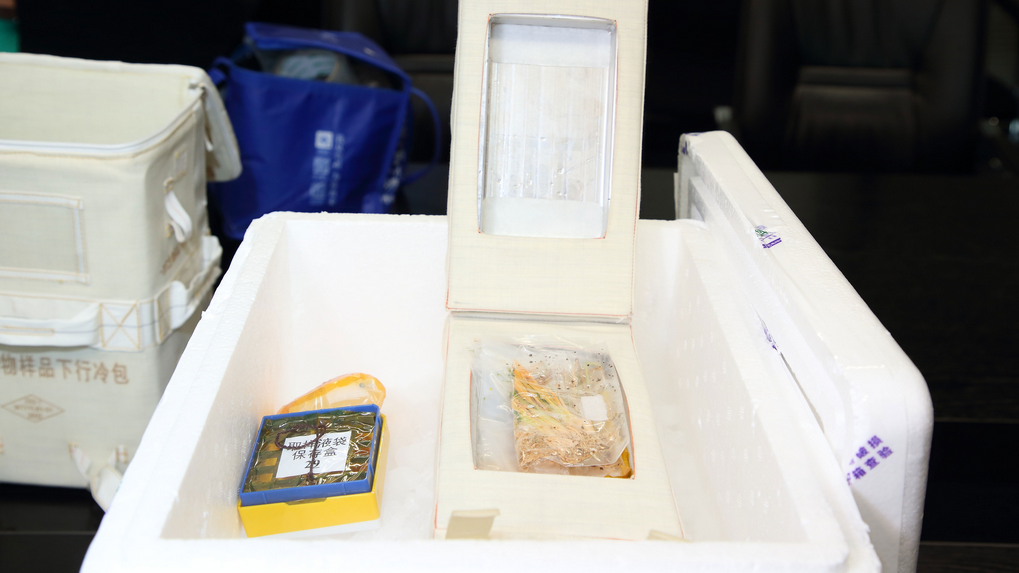
A batch of scientific research has been conducted by Chinese researchers after the Shenzhou-15 spacecraft returned to the Earth and brought back 20kg of experiment samples from the China Space Station (CSS).
During the six-month mission, the Shenzhou-15 trio installed and tested 15 scientific experiment cabinets, and conducted over 40 scientific experiments and technical tests in the fields of space science research and application, space medicine and space technologies.
New features of "space cells"
The Shanghai Institute of Nutrition and Health (SINH) under the Chinese Academy of Sciences (CAS) has got a box of cell and tissue culture module, which contained skeletal muscle cells.
The experiments in space have realized culture and differentiation of skeletal muscle cells, and astronauts have observed phenomena like cell fusion and muscle fiber formation, according to a SINH report in June, when it got the samples.
By using the country's fluorescence imaging system, an in-orbit live cell autonomous visual analysis method of phagocytosis has been established. The technology was used to detect the induction and formation of autophagosomes in skeletal muscle cells under the space microgravity environment for the first time, said the institute.

A box of cell and tissue culture module retrieved from the China Space Station is packed for delivery, June 4, 2023. /CMG
Through comparison experiments of samples from the CSS and Earth, preliminary discoveries have been made.
According to Ying Hao, a researcher at the SINH, skeletal muscle cells still had the ability to grow and differentiate in the microgravity environment, but it lead to abnormal stress responses, changing autophagy level and impaired recovery.
Skeletal muscle accounts for 40 percent of human body weight. Obesity, diabetes and other metabolic diseases, as well as aging-related muscle atrophy, are all related to skeletal muscle dysfunction, said Ying, adding that muscle atrophy will also happen to astronauts.
The study will help assist with the follow-up missions on the space station, and moon and Mars exploration, Ying said.
It will also provide new ideas for disease prevention and treatment on Earth, such as sarcopenia and muscle atrophy, the researcher added.
Microgravity experiment on aluminum alloys
CAS' Institute of Metal Research (IMR) has been dissecting and analyzing an aluminum alloy material retrieving from the space station. Experiments on aluminum alloys have been completed in a space cabinet.
Single crystal superalloys are the key materials for the manufacture of aero engines and steam turbine blades.
But the elemental composition of these materials is much more complex than that of water, coupled with solubility of different elements, the effects of temperature and gravity, which will lead to defects, said Luo Xinghong, a researcher at the IMR.
To improve their overall performance, Luo said gravity should be considered, with the space station an ideal environment.
The CSS' application system for space science projects has been opened to scientists and engineers, and projects covering space science and human research, physics in microgravity, and new space technologies and applications will be solicited. (CGTN)

86-10-68597521 (day)
86-10-68597289 (night)

52 Sanlihe Rd., Xicheng District,
Beijing, China (100864)

